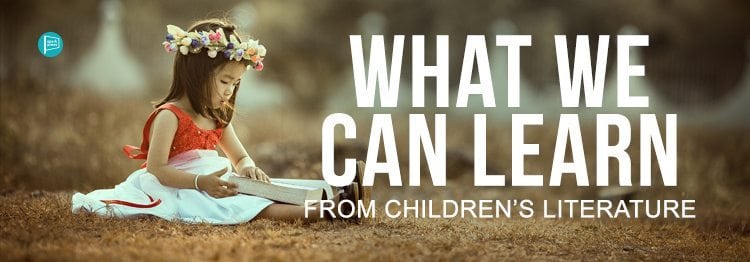
Our first experiences with reading are often the fairytales, bedtime stories, and chapter books we encounter as children. These stories help guide how we see, interpret, and interact with the world. However, they can also help us with our writing. Although children’s literature may seem too simplistic or too underdeveloped to apply to adult and literary fiction, it still has all the elements of story—just on a smaller scale. Children’s literature offers us writing in microcosm. Accordingly, the same techniques and tactics that make children’s stories so impactful can inform our own writing. By learning from the approaches of the children’s authors we admire, we can lend our stories the same lasting, timeless quality. In honor of Universal Children’s Day (November 20), we’re sharing some of the important writing lessons we can learn from children’s literature.
Children’s literature teaches us to find complexity in the things that seem simple. In a child’s view, everything is new and exciting—everything has the potential for magic. Consequently, children’s authors cater to, and even adopt, this perspective. In The Little Prince, a single flower is reason enough for an interstellar journey. In Anne of Green Gables, an imaginary friend is as important as a real one. In The Tale of Despereaux, the narrator preoccupies herself with the vivid, internal life of a mouse in a castle. These stories draw attention to the little details of the world—then explore just how big they can become. No story is too small. By narrowing the focus in our own writing, we can find the complexities that present themselves in everyday life and give them new meaning.
While the stories in children’s literature are complex, the wording doesn’t have to be. Children’s authors teach us a lesson in plain language. They tell stories in ways children can understand, distilling ideas down to their essence. This doesn’t discount their depth, though—all the emotions, conflict, and complexity remain, just in fewer words. The grand revelation at the end of Charlotte’s Web is presented simply that “You have been my friend. That in itself is a tremendous thing.” Simple wording doesn’t mean sacrificing complexity. Children’s literature serves as a reminder that we don’t always need to use complicated, flowery language to tell our stories. In fact, most of the time, it’s better to suit our stories to our audience and tell them in terms the reader can understand.
Along with guiding what we should include in a story, children’s literature also teaches us how to end a story. While it’s true that not all children’s books have happy endings—Tuck Everlasting and The Velveteen Rabbit immediately come to mind—children’s literature reminds us not to undervalue a happy ending. Happy endings can reaffirm that good will triumph over evil or that hard work pays off, messages as welcome to adults as they are to children. Sometimes, characters deserve to get their golden ticket and keep the chocolate factory, too. Children’s literature shows that we have the freedom to let things work out in our own stories. These tales even suggest that a story can have a happy ending and still be complex and meaningful. At the end of The Princess Bride, Buttercup and Westley aren’t guaranteed to live happily ever after. Still, the story lets us hope, and it gives the characters a chance. Like the authors of children’s literature, we can offer nuance and show the stakes through our endings and still let them be happy.
In both subject and style, children’s literature teaches us how to tell a story. These books are proof that simple words can carry an important message. Children’s literature goes beyond that, too, though, instilling us with life-lessons and, hopefully, a life-long love of reading. We keep these tales with us throughout our lives, retelling them to ourselves and, someday, to our own children. By tapping into this tradition and using it in our writing, we improve our own stories—making them stories that are also worth passing down.

Children’s literature, on the other hand, goes beyond that, embedding life lessons and, perhaps, a lifelong love of reading in us. We carry these stories with us for the rest of our lives, retelling them to ourselves and, hopefully, our own children. Thank you!
In clear language, children’s authors teach us a lesson. They explain stories in a way that youngsters can understand, reducing concepts to their core. Thank you so much!
I could say that I love reading this article because I was able to gain a lot of advice or suggestions about this topic. I found it very helpful because it is also informative and reliable.